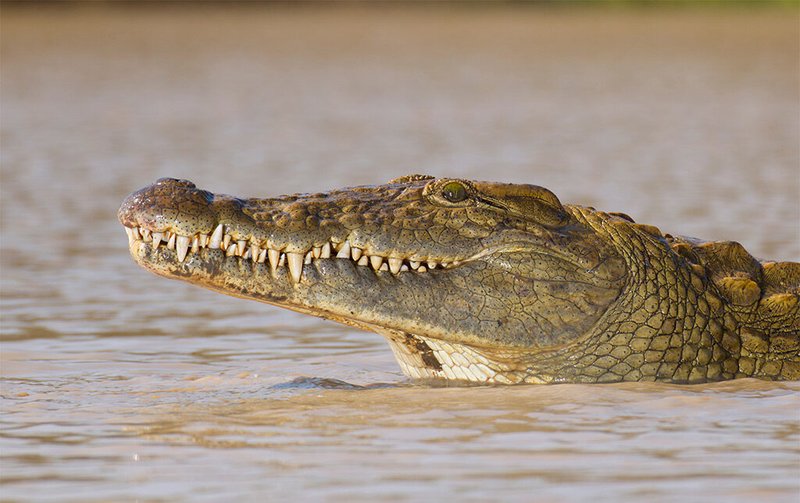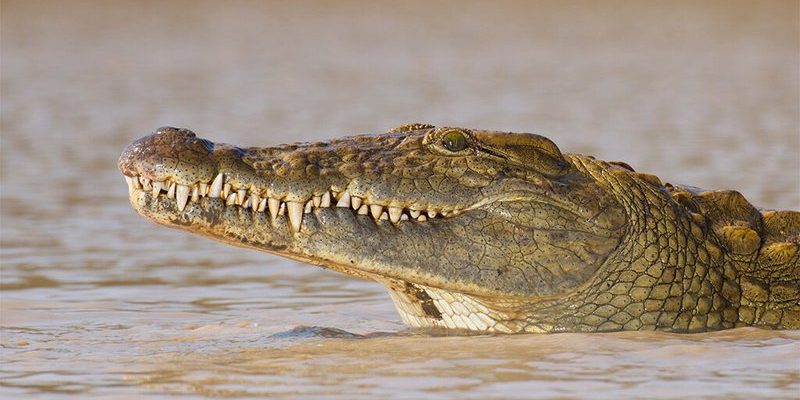
You might picture crocodiles as the villains of nature—lurking in the shadows, just waiting to snap up unsuspecting prey. But there’s so much more to these creatures than what we see in movies and documentaries. Let me break down the most common myths and facts about crocodiles, allowing us to dive deeper into their world and understand these remarkable animals a bit more.
Crocodiles Are Just Big Alligators
One of the biggest misconceptions is that crocodiles and alligators are the same. Honestly, they are quite different! While they belong to the same family—Crocodylia—they are distinct species with unique traits. Crocodiles typically have a V-shaped snout, while alligators have a U-shaped one. This difference in snout shape reflects their diets and how they hunt.
Crocodiles are generally found in saltwater environments, while alligators prefer freshwater habitats, like ponds and swamps. You know how some folks are beach lovers while others prefer the serenity of a lake? It’s a bit like that! This preference for different environments plays a significant role in their behavior and even their size.
If you ever visit a zoo or wildlife park, you might notice these differences firsthand. Crocodiles often appear more aggressive and larger than alligators. This can make the former seem like the “bad guys” of the reptile world, but both species have their own adaptations that help them thrive in their environments.
Crocodiles Are Mindless Killers
Another myth is that crocodiles are ruthless and mindless killing machines. Here’s the thing: while they are excellent hunters, they also display complex behaviors and instincts. Crocodiles can exhibit nurturing tendencies, such as caring for their young after hatching. Yes, you read that right! Mother crocodiles will protect their eggs from predators and even carry their tiny hatchlings to the water in their mouths—like a proud parent showing off a new baby.
Their hunting strategies are also quite sophisticated. Crocodiles often lie in wait, using their excellent camouflage to ambush prey. They’re not just mindlessly snapping at anything that moves; they’re calculating and patient. Imagine a highly skilled predator, quietly observing its surroundings before making a strategic move.
This behavior can be surprising to many. Watching a crocodile patiently stalk its prey can actually change how you perceive these remarkable reptiles. They’re not just about power; they’re about strategy, too.
Crocodiles Can’t Regulate Their Body Temperature
You might be surprised to learn that crocodiles are ectothermic, which means they rely on their environment to regulate body temperature. This doesn’t mean they’re at the mercy of the weather, though. Crocodiles have developed some clever techniques to manage their temperature effectively. They can bask in the sun to warm themselves up or enter the water to cool down.
Think of it like how we wear jackets in cold weather or seek shade in the summer. Crocodiles will often be seen lying on rocks or sandy banks, soaking up the sun. They’re savvy when it comes to managing their heat, which helps them remain active and hunt effectively.
So, while they may not be able to control their temperature as we do, crocodiles have adapted beautifully to their environments. Their ability to withstand heat helps them thrive in often harsh conditions—an incredible testament to their resilience.
Crocodiles Have Super Fast Reflexes
Crocodiles are often portrayed as lightning-fast killers, and while they can move quickly in short bursts, they aren’t necessarily as speedy as we think. They can run at speeds of up to 20 miles per hour—but only for short distances. Imagine a sprinter on a track who can’t keep up the pace after the initial burst. Crocodiles have this same limitation.
When they’re in the water, however, they can glide effortlessly with surprising speed and agility. Their powerful tails propel them forward, making them strong swimmers. If you’ve ever seen a boat race, you’ll understand that while they may seem slow on land, in water, they can be a force to be reckoned with. It’s all about knowing their strengths!
This duality is fascinating. They might not be the fastest creatures on land, but their underwater prowess more than makes up for it.
Crocodiles Are Endangered
While crocodiles are amazing creatures, many species face significant threats due to habitat loss, poaching, and climate change. Some species, like the Philippine crocodile, are critically endangered. It’s crucial to recognize that not all crocodile populations are in the same boat—some are thriving while others are hanging by a thread.
Conservation efforts are vital to protecting these ancient reptiles. Organizations and governments are working to create protected areas and promote sustainable practices that help maintain healthy crocodile populations. Like many wild animals, they play a crucial role in maintaining the health of their ecosystems.
You might be wondering how you can help. Supporting conservation initiatives, spreading awareness, or even just educating yourself and others can make a difference. Every small step counts when it comes to protecting these fascinating animals.
Crocodiles are more than just fearsome predators; they are complex creatures with behaviors and characteristics that can often be misunderstood. By debunking these common myths and focusing on the facts, we can appreciate these remarkable reptiles for what they truly are—survivors of the ages.
As we continue to learn about crocodiles, it’s essential to remember the role they play in our ecosystems and the importance of protecting their habitats. Next time you hear a story about crocodiles, you can confidently share the truths and myths that help paint a fuller picture of these incredible beings. They deserve our respect and understanding, just as much as any other creature in the wild. So, let’s continue to explore and learn more about the natural world we share!

